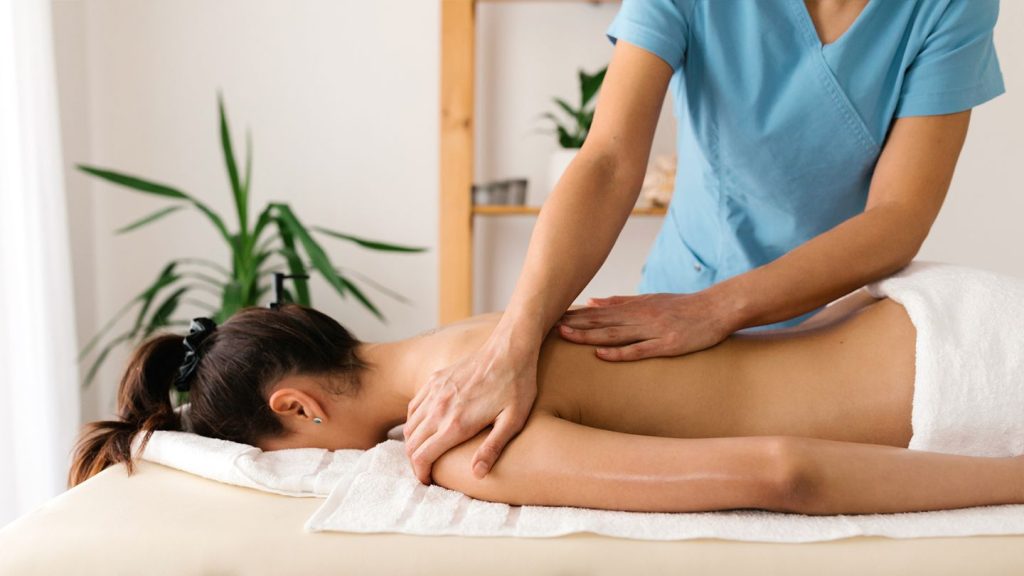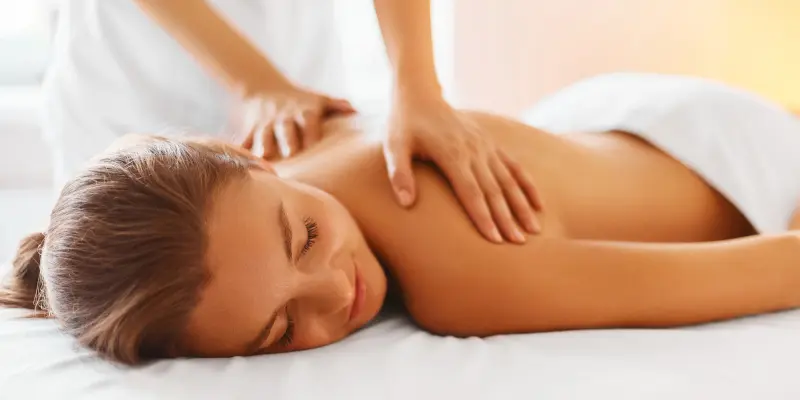The belief that massage releases toxins has been a staple claim among some massage therapists. However, the casual use of the term ‘detoxification’ often lacks scientific backing and can be misleading. While there are indeed real toxins and the body does have natural processes to deal with them, the notion that massages expel these substances from the body requires a critical examination. It’s essential to separate the myths propagated in the wellness industry from the scientific evidence that surrounds the practice of massage therapy.
Certain massage techniques may affect the body’s systems, but the extent to which they can actively ‘release’ or ‘flush out’ toxins is a subject of much debate. It is vital to approach such claims with a healthy dose of skepticism and an understanding of physiology before accepting them at face value. This examination aims to clarify what is known, scientifically, about massage therapy’s relationship with the body’s detoxification processes.
Key Takeaways
- The body’s natural detoxification system is complex and efficient, making the additional claim of toxin release through massage questionable.
- While manual therapies, including massage, can support the lymphatic system, they do not directly ‘detoxify’ the body.
- Experiencing flu-like symptoms post-massage is common, but attributing these to a release of toxins lacks concrete scientific evidence and may distract from the real benefits of massage.
The Science of Massage and Toxin Release
Massage therapy has been studied for various benefits, including alleviating muscle pain, reducing blood pressure, and improving blood flow. Professional massage therapists utilize techniques that can support the immune system and provide relief for those with chronic health issues, but the idea that massage directly expels toxins is not firmly established in scientific literature.
Understanding the Body’s Natural Detoxification Process
The human body has a sophisticated detoxification system that operates continuously to eliminate waste products. This system includes organs such as the liver and kidneys, which filter blood, break down toxins, and excrete them. Skepticism arises when massage therapists attribute detoxifying powers to massage that go beyond what the body naturally does. It’s important to recognize that while massage may have many health benefits, the body’s inherent detox mechanisms are already highly effective without external aid.
How Massages May Influence the Lymphatic System
Massage may impact the lymphatic system, which is responsible for transporting lymph, a fluid containing white blood cells throughout the body. Manual lymphatic drainage (MLD) is a specialized technique that targets this system to reduce swelling, though its use as a detoxification method is overstated. Unlike organs like the liver, lymph nodes primarily manage lymph fluid and immune responses, not toxin elimination.
The Role of Lymphatic Massage in Promoting Detoxification
While lymphatic massage can support the lymphatic system, its role in promoting detoxification is often exaggerated. The primary function of the lymphatic system is to transport lymph, which includes immune cells, throughout the body. Although manual lymphatic drainage can help move this fluid and potentially reduce swelling, the evidence for its ability to detoxify is not conclusive. Lymph nodes play a critical role in filtering lymph, but they do not directly detoxify substances like heavy metals or pollutants.
Deep Tissue Massage: Pressure and Potential Effects on Toxins
During a massage appointment, deep tissue massage applies pressure to muscle layers and connective tissue. This pressure can increase blood circulation and aid muscle recovery, but the idea that it can rid the body of toxins is unfounded. While it may relieve muscle pain and stiffness, attributing detoxifying effects to the pressure used in deep tissue massage is speculative.
Does Massage Truly Flush Out Toxins?
Contrary to popular belief, massage does not flush out toxins in the way many assume. While a massage appointment can offer relaxation and muscular relief, there’s no evidence to support the claim that massage expels toxins from the body. Such assertions often stem from anecdotal experiences rather than scientific research.
Evaluating Claims of Lactic Acid Removal Through Massage
One common claim is that massage can remove lactic acid from muscle tissues. While massage may increase circulation and help alleviate muscle soreness, its role in expelling lactic acid is questionable. The body naturally clears lactic acid after exercise or strenuous activities, and the contribution of massage to this process is not yet definitively understood.

The Aftermath of a Massage: Real Symptoms Versus Myths
Some individuals report flu-like symptoms after a massage, including mild headaches and muscle soreness. While these symptoms are typically transient and not a cause for alarm, attributing them to the release of toxins is not supported by scientific evidence. Instead, they may be the body’s natural response to the physical manipulation of tissues during a massage.
Why Some People Feel Unwell After a Massage
Post-massage discomfort, such as that experienced after sports massage, including muscle soreness and fatigue, is typical and generally not a cause for concern. These effects are temporary and are part of the body’s adjustment to the physical impact of the massage rather than a result of toxins leaving.
The Importance of Hydration Post-Massage
Staying hydrated after a massage is necessary for overall health and can support recovery from muscle pain and chronic health issues. Hydration aids in maintaining normal bodily functions, including those of the immune system, but it is not a means to enhance ‘detoxification’.
Debunking the Myth: Can Released Toxins Make You Ill?
The notion that massage releases toxins that then make you ill is a persistent myth lacking scientific evidence. While it’s true that the body can experience various reactions following a massage, attributing these to a flood of toxins is misleading. The immune system manages toxins, and a massage does not suddenly force the body to eliminate these toxins. Instead, feelings of unwellness post-massage may be due to other factors like dehydration or the body’s response to the relaxation of previously tense muscles.
Popular Massage Techniques and Their Detox Claims
Many popular massage techniques come with claims of detoxification benefits. However, the scientific community has not found substantial evidence to support the idea that massage directly flushes toxins from the body. While massage therapy promotes relaxation and blood flow, and may help the immune system by lowering stress hormones, the detox claims often exceed the proven benefits. Both massage therapists and clients need to understand the effects of massage and avoid perpetuating detox myths.
Cupping Therapy: An Ancient Technique With Modern Appeal
Cupping therapy has been used for centuries, with modern appeal due to its purported benefits, including toxin release. However, scientific scrutiny reveals that while cupping can increase blood circulation and might aid in relaxation, the claim that it specifically targets and releases toxins is not supported by evidence. Educating clients on what cupping can realistically do, rather than perpetuating outdated beliefs about toxin release, is essential for the credibility of massage therapy as a health service.
The Buzz Around Massage Guns: Do They Help With Toxins?
Massage guns have become popular tools for self-massage, often associated with toxin-release claims. However, there is no concrete evidence to suggest that they or any other massage tools can directly remove toxins from the body.
Massage guns are devices that may help with muscle recovery and tension relief. While they may improve blood circulation and help tight muscle relaxation, there is no clinical research backing the notion that they can also aid in toxins release. The benefits of using massage guns should be without the expectation of detoxification effects.
Myths Versus Facts in the World of Massage
Despite the prevalence of myths in the massage industry, such as the belief that massage can flush toxins into the bloodstream, it is crucial to distinguish between evidence-based benefits and misconceptions. Research does not support the idea that a massage session can directly expel toxins. Instead, the benefits of massage are more accurately associated with improved circulation, relaxation, and support for the body’s natural healing processes.
Persistent Myths in the Massage Profession
One of the most persistent myths in the massage profession is the claim that massage releases toxins. This misconception has been passed down through generations of therapists and is still prevalent today. Despite the lack of scientific backing, some practitioners continue to suggest that clients drink water post-massage to flush toxins into the bloodstream. The health and wellness community needs to rely on current research to dispel such myths and focus on the real benefits of massage, such as relaxation and improved circulation.
What Research Says About Massage and Toxins
Research into massage lore has yet to validate the claim that massages can release harmful substances from the body. While manipulation of soft tissue during massage can improve oxygen and nutrients delivery to tissues, the body’s natural processes, primarily through the liver and kidneys, are responsible for toxin elimination. Therefore, the idea that massage facilitates direct toxin removal is not supported by current scientific studies.

Frequently Asked Questions
1. What are the best massage techniques for detoxification?
While many techniques claim to aid in toxin release, it is crucial to explain that the body eliminates uric acid and other waste products through its physiological processes, and no specific lymphatic massage or technique can dramatically change this. Understanding the body’s natural pathways for releasing toxins can help dispel misconceptions and set realistic expectations for the effects of a massage.
2. How do I flush toxins from the body after a massage?
The answer lies in recognizing that the body’s natural detoxification mechanisms are efficient and self-regulating. Drinking water and engaging in healthy lifestyle choices support these systems, but the notion that massage can release toxins from your body is not scientifically founded.
3. Should i drink water after a massage to aid in toxin release?
Drinking water post-massage is often recommended, but not to aid in toxin release. Adequate hydration is beneficial for the immune system and can help alleviate muscle pain, especially for individuals with chronic health issues. It also supports overall wellness and recovery, but its role specifically in toxin release post-massage is not scientifically substantiated.
Final Perspective on Massage and Toxin Release
Massage therapy offers numerous well-documented benefits such as relief from muscle pain, improved blood pressure, and relaxation. However, when it comes to claims that massage can release toxins, it is essential to differentiate between myth and science. Current research does not support the notion that massage techniques can directly flush toxins from the body. Instead, the focus should be on the proven effects of massage, such as improved circulation of blood and lymph, which aid in the body’s natural detoxification processes.
The consensus among research and health professionals is that massage does not directly lead to detoxification. While massage can support various physiological processes, the idea that it can detoxify the body of stored substances like persistent organic pollutants is unfounded. The therapeutic benefits of massage, such as improved lymph flow and relaxation, should be celebrated without the misconception that it leads to significant toxin elimination.
